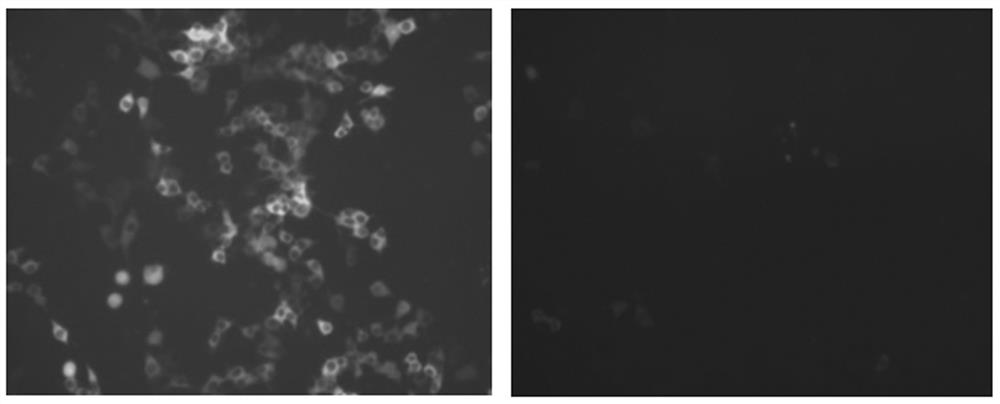Preparation method of cell line with high homologous recombination rate
A cell and carrier technology, applied in the field of cell line preparation, can solve problems such as low HDR efficiency, unsuitable experimental requirements, and few DNA repair results
- Summary
- Abstract
- Description
- Claims
- Application Information
AI Technical Summary
Problems solved by technology
Method used
Image
Examples
preparation example Construction
[0051] The preparation method of the donor vector is as follows:
[0052] (1) Determine the siRNA sequence of Ku70.
[0053] SEQ ID No. 4 (Ku70i): GGAAGAGATAGTTTGATTT.
[0054] (2) Determine the effective siRNA sequence of LIG4.
[0055] SEQ ID No. 5 (LIG4i): GCTAGATGGTGAACGTATG.
[0056] The gene fragment H1-LIG4i-spacer-U6-Ku70i was synthesized by an outsourcing company.
[0057] (3) Determine the CDS sequences of functional proteins expressed by SWI5 and SFR1
[0058] The CDS sequences of the important proteins SWI5 and SFR1 in the homologous recombination pathway were queried by NCBI, and the corresponding primers were designed to amplify the two genes of SWI5 and SFR1 respectively, and then bridge PCR to fuse SWI5-P2A-SFR1 together, using Nhe1 and Apa1 two genes Each restriction site was linked to the pcDNA3.1 vector.
[0059] 1) Using cDNA as a template, the SWI5 gene was amplified by amplification.
[0060] The amplification primers are:
[0061] SWI5 F (SEQ ID N...
experiment example 1
[0113] The vectors Lam-Donor-gn and NLS-cas9-gk-H1-lamin sg were constructed, and 293THDR cells and wild-type 293T cells were co-transfected. After transfection, they were cultured for 72 hours. Flow cytometric analysis showed that 293THDR cells were homologously recombined. The ratio is about 20 times of the homologous recombination efficiency of wild-type 293T cells. The result is as figure 1 shown.
experiment example 2
[0115] Constructed the vector tubB-Donor-gn and NLS-cas9-gk-H1-TUB SG1, co-transfected 293THDR cells and wild-type 293T cells, and cultured for 72 hours after transfection. Flow cytometry analysis showed that 293THDR cells were homologously recombined. The ratio is about 20 times of the homologous recombination efficiency of wild-type 293T cells. The result is as figure 2 and image 3 shown.
PUM
 Login to View More
Login to View More Abstract
Description
Claims
Application Information
 Login to View More
Login to View More - R&D
- Intellectual Property
- Life Sciences
- Materials
- Tech Scout
- Unparalleled Data Quality
- Higher Quality Content
- 60% Fewer Hallucinations
Browse by: Latest US Patents, China's latest patents, Technical Efficacy Thesaurus, Application Domain, Technology Topic, Popular Technical Reports.
© 2025 PatSnap. All rights reserved.Legal|Privacy policy|Modern Slavery Act Transparency Statement|Sitemap|About US| Contact US: help@patsnap.com



